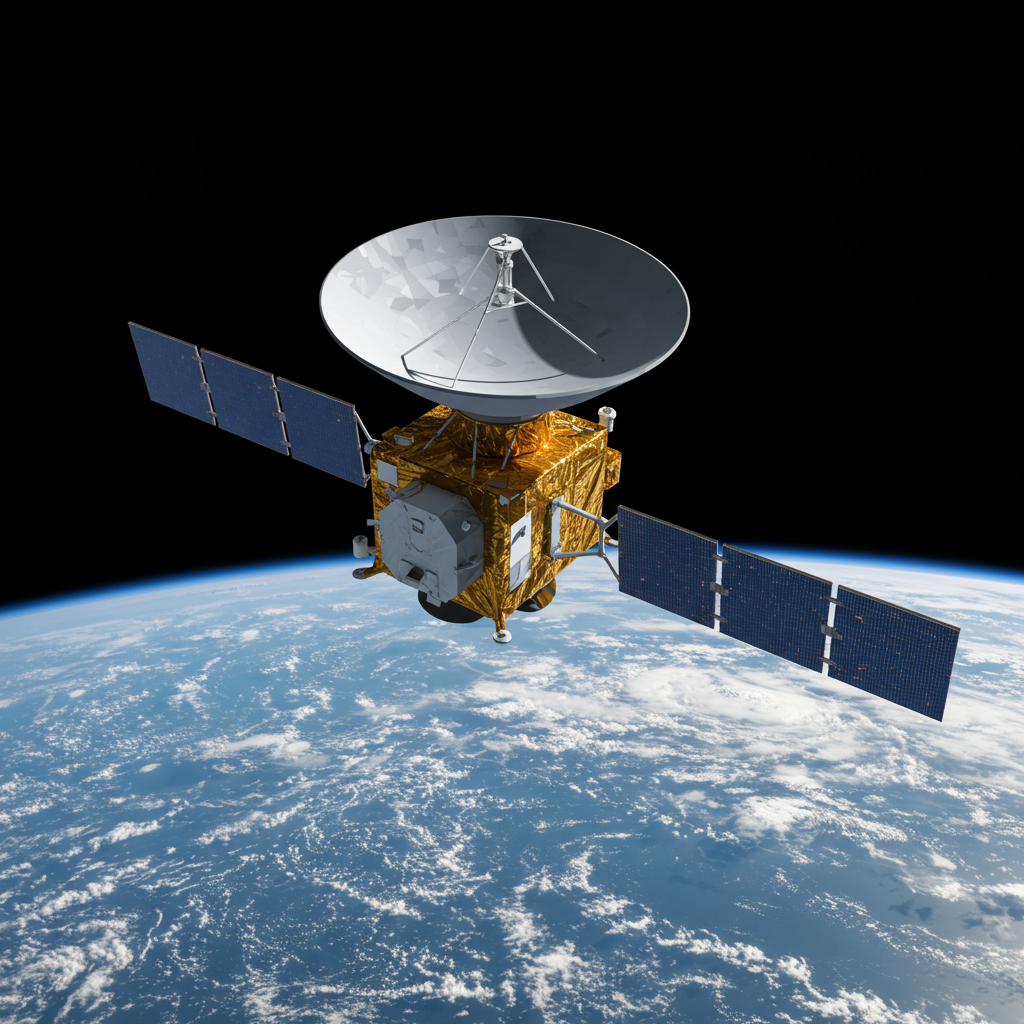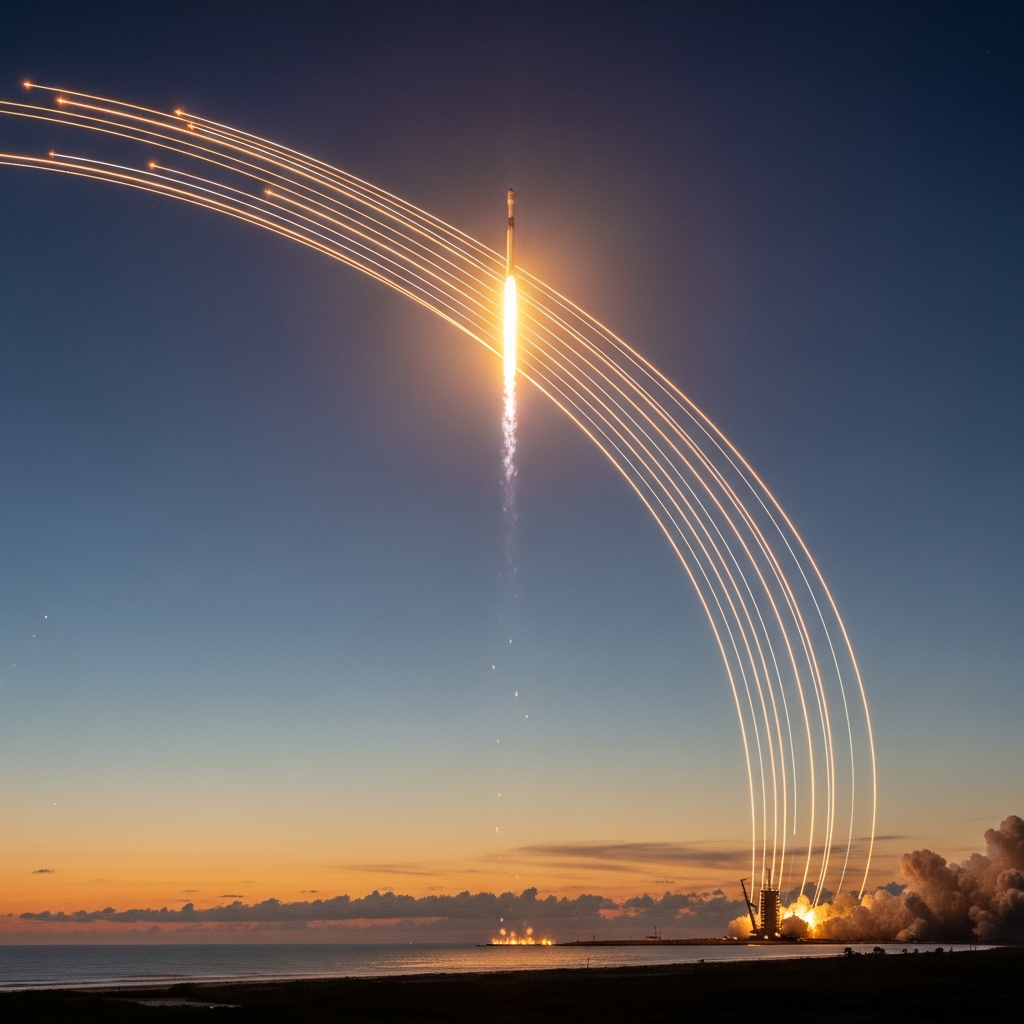Blue Origin’s New Glenn rocket is poised to mark a significant moment in spaceflight, ready for its second orbital mission from Florida’s iconic Space Coast. This colossal vehicle, an impressive feat of engineering from Jeff Bezos’ aerospace company, stands as one of the tallest rockets currently active in the United States. Its sheer scale prompts a natural comparison: just how does New Glenn stack up against the reigning giants of space, particularly SpaceX’s Starship, and the legendary rockets of the past?
This article delves into the precise New Glenn height, exploring its formidable dimensions and critical capabilities. We’ll weigh its stature against other monumental launch vehicles, understand its ambitious mission to Mars, and examine Blue Origin’s broader vision for a future in space.
The Towering New Glenn: A Closer Look at Blue Origin’s Rocket
Named in honor of NASA astronaut John Glenn, the first American to orbit Earth, the New Glenn represents a bold step in commercial space exploration. This heavy-lift launch vehicle is designed for powerful missions, aiming to deliver significant payloads into orbit and beyond. Its development has been a multi-year journey, culminating in its maiden flight and now its anticipated second launch.
Engineering New Heights: Dimensions and Capabilities
Blue Origin’s New Glenn rocket stands at a formidable 322 feet tall. To put this in perspective, it’s almost as long as an American football field and significantly taller than the 305-foot Statue of Liberty. This impressive height accommodates a nearly 23-foot-wide fairing, specifically engineered to house “bigger constellations and larger payloads,” signaling Blue Origin’s intent to serve a diverse range of clients from satellite operators to scientific missions.
The rocket itself is a two-stage system, meticulously crafted for both power and reusability. The first stage, a crucial component for initial thrust, is powered by seven of Blue Origin’s BE-4 engines. A key aspect of Blue Origin’s strategy, this first stage is designed for reusability, targeting at least 25 flights, with recovery efforts focused on landing it on a drone ship in the Atlantic Ocean. The upper stage, optimized for orbital operations, utilizes two BE-3U engines, perfectly tuned for the vacuum of space.
Beyond the First Flight: The Road Ahead for New Glenn
New Glenn’s maiden flight occurred on January 16, 2025, from Cape Canaveral, Florida. While the upper stage successfully achieved orbit, the first-stage booster was unfortunately lost during its descent. This outcome, common in early test flights for reusable rockets, underscores the technical challenges of modern spaceflight. Despite this, the mission provided invaluable data, paving the way for enhancements and increased confidence in future launches.
Looking forward, Blue Origin envisions New Glenn playing a pivotal role in the burgeoning space economy. The rocket is slated to shuttle Amazon’s Project Kuiper satellites into orbit, supporting a massive internet constellation. Furthermore, it’s designed to undertake various missions for paying customers, including crucial launches for NASA and commercial telecommunications providers. The second flight is a critical step in demonstrating the rocket’s reliability and its ambitious reusability goals, which are central to reducing launch costs and accelerating mission cadence.
New Glenn vs. The Giants: A Comparative Rocket Height Analysis
While New Glenn is undoubtedly a towering achievement, its size becomes even more apparent when compared to other prominent launch vehicles, both active and retired. The landscape of heavy-lift rockets is dominated by a few key players, each pushing the boundaries of what’s possible in space.
Starship: The Undisputed Colossus
Despite New Glenn’s impressive stature, it is still eclipsed by SpaceX’s Starship, which holds the title of the world’s largest and most powerful rocket ever developed. When fully stacked, the second iteration of Starship (Version 2) stands at a staggering 403 feet tall. This “mega rocket” is central to Elon Musk’s ambitious vision for human exploration of Mars and plays a critical role in NASA’s plans to return astronauts to the moon as part of the Artemis program. Starship’s scale has officially surpassed NASA’s iconic Saturn V, marking a new era of colossal space transportation.
Legacy Titans: Saturn V and Beyond
For decades, the standard for massive rockets was NASA’s Saturn V. This three-stage heavy-lift launch vehicle, critical to the historic Apollo lunar missions of the 1960s and 1970s, measured 363 feet tall. Its retirement left a void in truly monumental launch capabilities until the advent of today’s new generation of heavy-lifters. Starship’s emergence not only filled this void but significantly surpassed its predecessor, signaling a new benchmark in rocket engineering.
Active Competitors: Falcon 9, Falcon Heavy, and Vulcan
New Glenn also significantly towers over most other rockets currently active in the United States, highlighting its substantial capacity in the competitive launch market.
SpaceX Falcon 9: At 230 feet tall, the Falcon 9 is the workhorse of modern spaceflight. It is the world’s most active rocket, responsible for deploying SpaceX’s Starlink internet satellites and transporting astronauts to the International Space Station. SpaceX also offers the more powerful Falcon Heavy, which stands at the same height but incorporates two additional Falcon 9 first-stage boosters for enhanced thrust.
United Launch Alliance (ULA) Vulcan: ULA’s new Vulcan rocket, which recently completed a national security mission, is slightly smaller than the Falcon 9 at 202 feet tall. Vulcan is highly configurable, offering the flexibility to fly with anywhere from zero to six solid rocket boosters for additional liftoff power, showcasing a modular approach to heavy-lift capabilities.
The High-Stakes Second Launch: ESCAPADE Mission to Mars
Blue Origin is working toward a Sunday, November 9, launch of its New Glenn rocket from Florida’s Launch Complex 36 (LC-36) at the Cape Canaveral Space Force Base. This second mission carries a high-stakes payload: NASA’s twin ESCAPADE spacecraft destined for Mars. This mission is pivotal for both Blue Origin and scientific exploration.
Journey to the Red Planet: NASA’s ESCAPADE Probes
The Escape and Plasma Acceleration and Dynamics Explorers (ESCAPADE) mission consists of two mini-fridge-sized spacecraft, built by Rocket Lab. These probes will embark on a trek to Mars, where they will orbit the Red Planet and conduct simultaneous observations of solar winds and space weather. This research is crucial for understanding how solar wind interacts with Mars’ atmosphere, aiming to unlock secrets about the planet’s climatic history and the potential for past or present life. ESCAPADE will be NASA’s first multi-spacecraft orbital science mission to Mars, offering unprecedented data on the Martian space environment. The mission, part of NASA’s Small Innovative Missions for Planetary Exploration program, was selected in 2020 with a budget of $55 million.
Precision and Progress: Launch Details and Reusability Goals
Launch preparations for the ESCAPADE mission have been meticulous and underway for weeks. In October 2025, Blue Origin rolled out the 188-foot first-stage booster, affectionately nicknamed “Never Tell Me the Odds,” from its Rocket Park manufacturing complex. It then underwent mating with the upper stage vehicle and went vertical on the launch pad for engine tests. The Federal Aviation Administration (FAA) has set the launch window for 2:45 to 5:11 p.m. ET.
A key objective for this mission, beyond successfully delivering the ESCAPADE probes, is another attempt by Blue Origin to land the first stage booster on a drone ship several hundred miles offshore in the Atlantic. A successful recovery would be a monumental step, validating New Glenn’s reusability design and positioning Blue Origin to accelerate its launch cadence, reduce costs, and secure lucrative contracts within the competitive national security space launch program. Such a feat would also allow the recovered booster to potentially be reused for a third mission, possibly deploying the Blue Moon Mark 1 lunar lander.
Blue Origin’s Ambitious Vision: Expanding Its Orbital Footprint
The upcoming launch and the ongoing development of New Glenn are part of Blue Origin’s broader, ambitious strategy to solidify its presence in the commercial space industry. The company is significantly expanding its infrastructure and operations across Florida’s Space Coast. Plans include constructing a vertical refurbishment facility near its LC-36 launch pad and developing a light-manufacturing facility in Titusville, near Space Coast Regional Airport. These investments underscore Blue Origin’s deepening commitment to the region and its long-term vision for sustained launch operations.
Furthermore, Blue Origin is strategically positioned to potentially secure major contracts, including a significant $4.4 billion lunar lander contract for NASA’s Artemis III mission. With NASA increasingly leveraging commercial rockets for cost-effective science missions and human spaceflight, a successful New Glenn program is critical for Blue Origin to challenge competitors like SpaceX and secure its share of the burgeoning space economy. The upcoming certification flights and planned uptick in activity for future missions, including deploying AST SpaceMobile’s BlueBird satellites for direct-to-cell communications, highlight Blue Origin’s determination to become a dominant force in orbital launch services and beyond.
Frequently Asked Questions
What is the primary mission of Blue Origin’s New Glenn rocket?
The New Glenn rocket is a versatile, heavy-lift launch vehicle designed to transport a wide range of payloads into orbit and beyond. Its primary mission objectives include launching Amazon’s Project Kuiper internet satellites, deploying various customer payloads for telecommunications providers, and facilitating scientific missions for agencies like NASA, such as the upcoming ESCAPADE probes to Mars. Blue Origin also aims for the New Glenn’s first stage to be reusable, significantly reducing the cost and increasing the frequency of future space missions.
Where are Blue Origin’s New Glenn rockets manufactured and launched from?
Blue Origin manufactures its massive New Glenn rockets on Florida’s Space Coast, specifically within its “Rocket Park” complex on Merritt Island, where large metallic cylindrical components are produced. The launch operations for New Glenn take place from Launch Complex 36 (LC-36) at the Cape Canaveral Space Force Base in Florida. Blue Origin invested over $1 billion to rebuild and modernize LC-36 into a state-of-the-art launch facility tailored for New Glenn missions.
How does New Glenn’s reusability goal impact its long-term competitiveness?
New Glenn’s reusability goal, specifically the intent to recover and reuse its first-stage booster for at least 25 flights, is crucial for Blue Origin’s long-term competitiveness. Successful reusability can dramatically reduce launch costs, allowing Blue Origin to offer more economical access to space. This cost efficiency is vital for securing high-value contracts from commercial clients and government agencies, accelerating launch cadences, and enabling the company to challenge established players like SpaceX, which has demonstrated consistent reusability with its Falcon 9 and Falcon Heavy rockets.
Conclusion
Blue Origin’s New Glenn stands as a testament to the ambitious future of commercial spaceflight. With its impressive New Glenn height of 322 feet, it is a formidable entrant in the heavy-lift launch market, ready to carve out its legacy alongside giants like Starship and the iconic Saturn V. As it prepares for its critical second launch carrying NASA’s ESCAPADE mission to Mars, all eyes will be on its performance and, crucially, its attempt at booster recovery. A successful mission will not only advance planetary science but also solidify Blue Origin’s position as a serious contender in the race for affordable, routine access to space, propelling humanity further into the cosmos.




